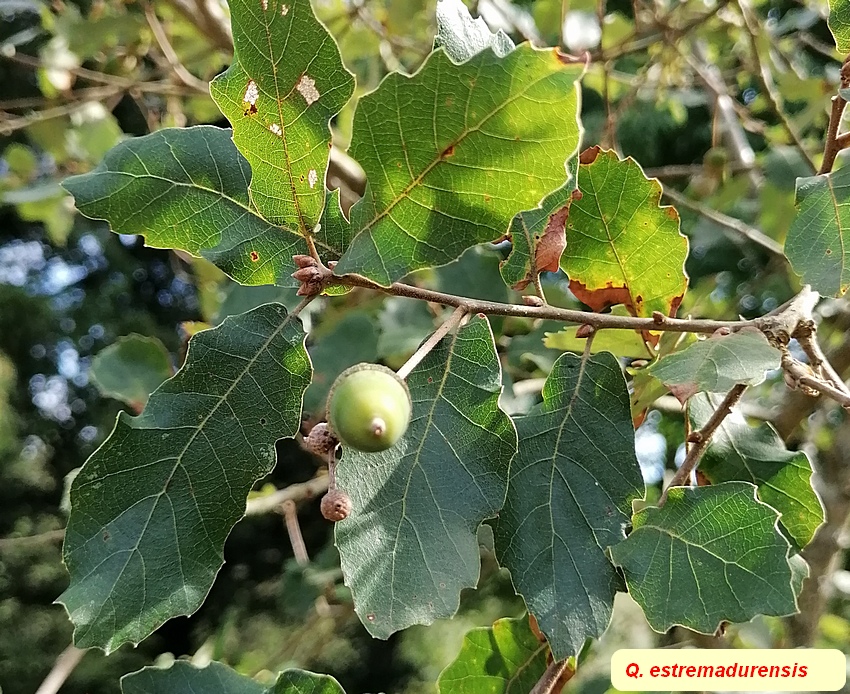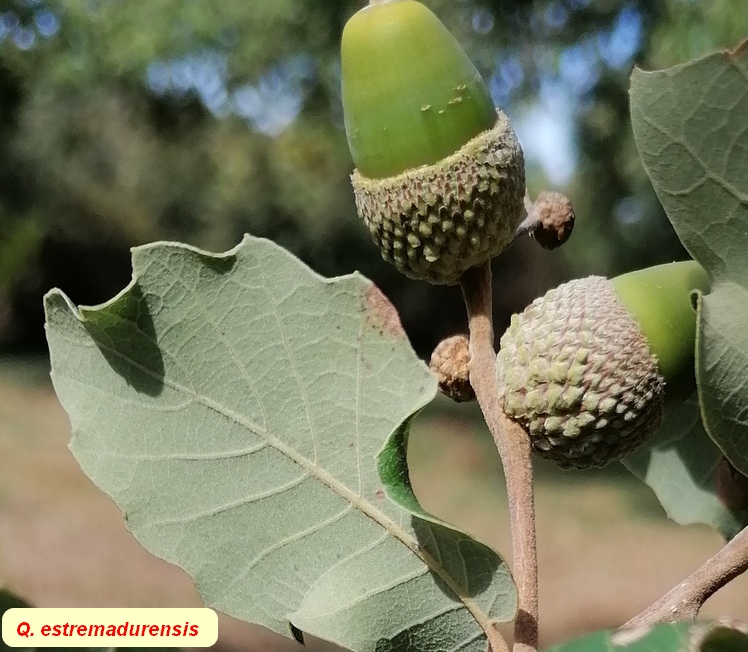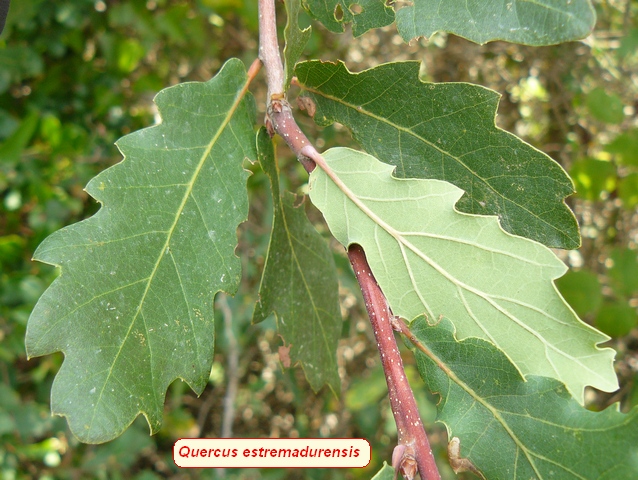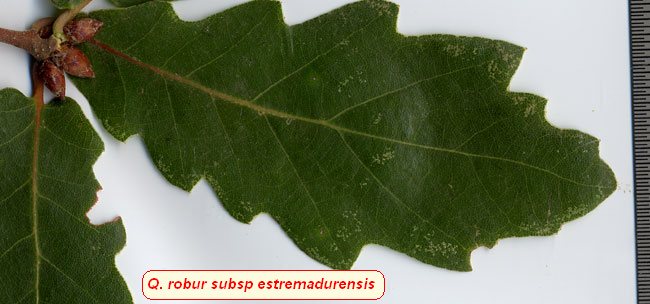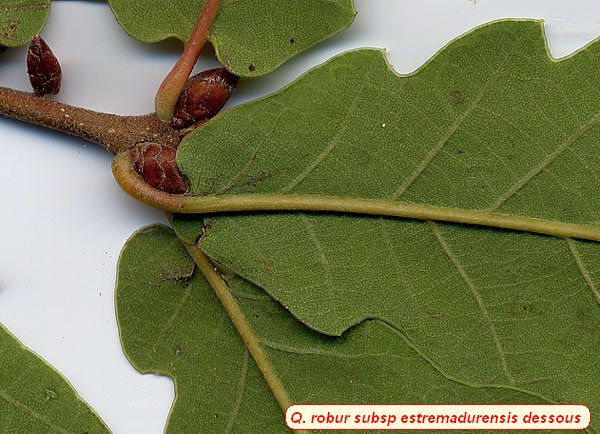| Quercus estremadurensis | |
| Author | O. Schwarz 1935 |
| Synonyms | robur subsp. estremadurensis
(O. Schwarz) A. Camus 1935 racemosa Brot. 1804 non Lam. 1785 robur subsp. broteroana auct. pl. non Schwarz 1935 robur var. conimbricensis Camus 1934 |
| Local names | |
| Range | Central-West Iberian Penisula, specially Portugal |
| Growth habit | reaches 20 m tall |
| Leaves | 7-14 cm x 4-7; marcescent or sometimes evergreen; flat, rather irregular, rhomboid, slightly leathery; adaxially shiny and hairless; dull abaxially, hairless ou glabrescent (sometimes with multiradiate and/or simple trichomes, mainly on the midvein), almost glaucous; base auricled; margin sinuate-lobate with 6-7 unequal, short, pointed, sometimes mucronate lobes; sinus rather narrow, shallow; 6-8 veins pairs, sinuous, slightly or not prominent, at an acute angle with the midrib; no sinusal veins; tertiary veins thin; summer leaves are narrower, more irregular, with less secondary veins and some sinusal ones; petiole pinkish, short (5-15 mm) |
| Flowers | |
| Fruits | acorn ovate-oblong, with persistent stylopodium; peduncle to 8 cm and more, slender, more or less glabrous; aborted acorns frequent; cup with numerous, appressed, pubescent scales, those of the base larger than those near the rib; |
|
Bark, twigs and |
tortuous twigs, slightly sulcate, with scattered round lenticels; |
| Hardiness zone, habitat |
in deep valleys with constant moisture and temperature; mainly on siliceous soils; |
| Miscellaneous | This taxon is, for the Spanish and Portuguese Authors, a true species, regarding its range, its habitat, its ecological behaviour, its morpholigical features (pubescence and shape of the leaves, among others), and the shape and development of its embryo. |
| Subspecies and varieties |
|
| Pictures |
|
